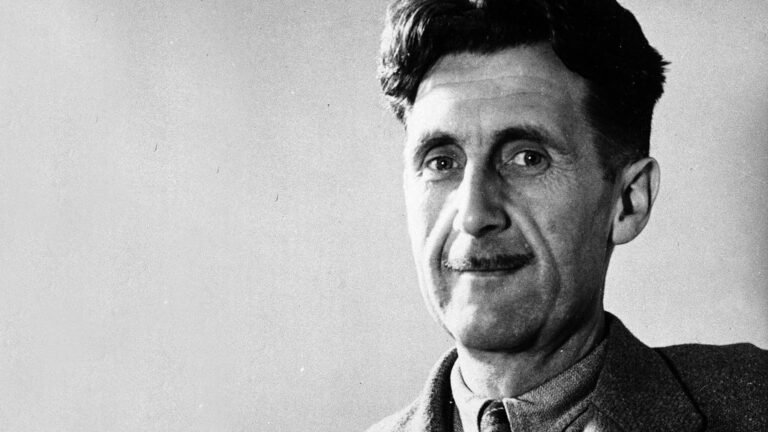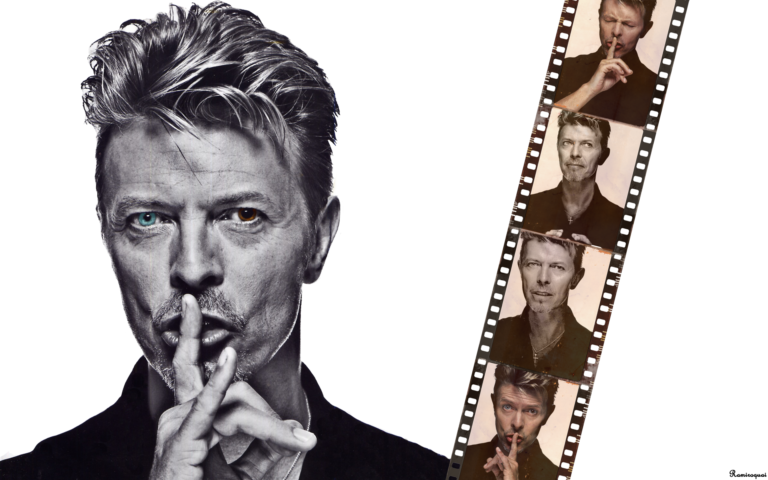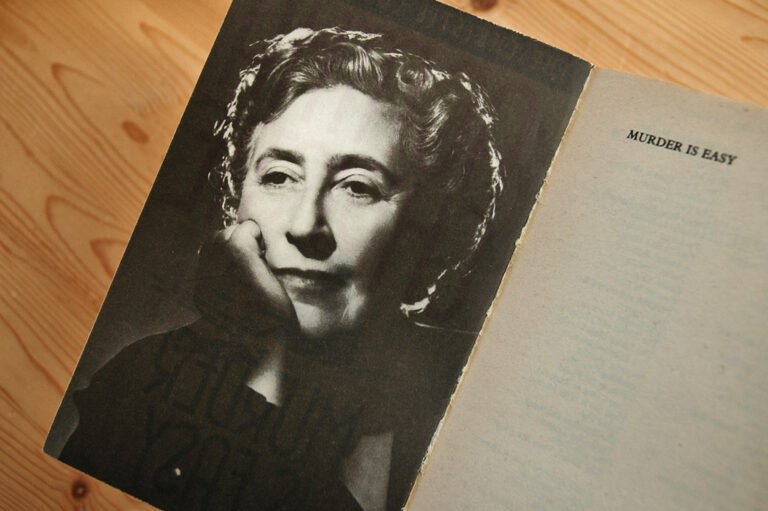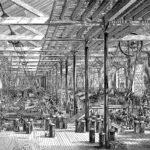J.R.R. Tolkien is a name that resonates with fantasy lovers.
J.R.R. Tolkien, Known for his incredible imagination, he created worlds that have captivated readers for decades. John Ronald Reuel Tolkien, best known as J. R. R. Tolkien, is a literary legend. Born in 1892, his works like “The Hobbit” and “The Lord of the Rings” have become cultural icons.
His stories are not just tales of adventure; they are intricate tapestries of rich languages, detailed histories, and unforgettable characters. Tolkien’s influence extends beyond books, shaping movies, games, and even modern storytelling. His ability to craft such immersive worlds has earned him a lasting legacy. Let’s delve into the life and works of the man behind Middle-earth, exploring why his stories continue to enchant readers worldwide.
Early Life
J.R.R. Tolkien, known for his epic fantasy works, had a fascinating early life. His background and education played a significant role in shaping his creative mind.
Family Background
J.R.R. Tolkien was born on January 3, 1892, in Bloemfontein, South Africa. His father, Arthur Tolkien, worked as a bank manager. His mother, Mabel Suffield, was a dedicated homemaker. The family moved to England when Tolkien was three years old.
Tolkien’s father passed away shortly after their move. His mother raised him and his younger brother alone. Mabel taught her sons at home, fostering a love for languages and stories. She passed away when Tolkien was just 12 years old.
Education
After his mother’s death, Tolkien and his brother were under the guardianship of Father Francis Morgan. They attended King Edward’s School in Birmingham. Tolkien excelled in languages and literature. He developed a fascination with ancient languages, especially Latin and Greek.
Tolkien later attended Exeter College, Oxford. There, he studied English Language and Literature. His academic journey at Oxford solidified his love for myths and legends. These interests would later influence his famous writings.

Credit: en.wikipedia.org
Academic Career
J.R.R. Tolkien, renowned author of “The Lord of the Rings,” had a fascinating academic career that greatly influenced his literary works. His experiences as a scholar and professor shaped his storytelling, bringing depth and authenticity to his fictional worlds.
Teaching At Oxford
Tolkien began his academic journey at Oxford University, where he was appointed as a professor of Anglo-Saxon in 1925. His passion for ancient languages and literature was evident in his teaching style.
Students were captivated by his deep knowledge and enthusiasm. He often brought ancient texts to life, making them accessible and engaging.
Many of his students remember him as a dedicated and inspiring teacher, one who could make even the most challenging material interesting and relatable.
Literary Studies
Tolkien’s academic career wasn’t limited to teaching. He contributed significantly to literary studies, particularly in the field of philology—the study of languages.
His work on “Beowulf,” a cornerstone of Anglo-Saxon literature, is still considered groundbreaking. He believed that understanding the language was key to understanding the story.
Tolkien’s academic research often found its way into his novels. You can see his deep understanding of myth and language in the intricate worlds he created. Have you ever wondered how his academic background influenced the languages of Middle-earth?
Creation Of Middle-earth
J. R. R. Tolkien crafted Middle-earth with rich detail and imagination. His world features diverse races, epic battles, and deep lore. The creation showcases his storytelling brilliance.
The creation of Middle-earth is one of the most fascinating aspects of J.R.R. Tolkien’s work. This mythical world, rich with history, languages, and cultures, has captivated readers for generations. Let’s dive into the journey of how Middle-earth came to life.
Inspiration And Influences
Tolkien’s inspiration for Middle-earth came from various sources. His love for mythology, especially Norse and Celtic myths, played a crucial role. He was also influenced by his experiences in World War I, where the horrors of battle gave depth to his stories of conflict and heroism.
Tolkien’s academic background in philology, the study of languages, also shaped Middle-earth. He created detailed histories and backgrounds for his characters and places. Have you ever wondered how your personal experiences might shape your creative work?
Development Of Languages
One of the most unique aspects of Middle-earth is its languages. Tolkien didn’t just create a world; he created entire languages. He developed Elvish languages like Quenya and Sindarin, complete with grammar and vocabulary.
This linguistic creation added authenticity to Middle-earth. Imagine reading a book where characters speak in a fully developed language. It makes the world feel more real and immersive.
Tolkien’s process shows the importance of details. When you pay attention to the small things, it can make your work stand out. What details can you add to your projects to make them more engaging?
In creating Middle-earth, Tolkien combined his love for language, mythology, and his personal experiences. This blend resulted in a timeless world that continues to inspire. So next time you embark on a creative project, think about how your unique experiences and interests can contribute to something truly special.
The Hobbit
J. R. R. Tolkien’s “The Hobbit” tells the adventure of Bilbo Baggins, a hobbit on a quest. He joins dwarves and the wizard Gandalf.
The Hobbit, written by J.R.R. Tolkien, is a timeless classic that has captivated readers of all ages. This enchanting story takes you on an unforgettable journey through Middle-earth, filled with adventure, mystery, and a touch of magic. If you haven’t read it yet, prepare to be swept off your feet by its charm and depth.
###
Plot Summary
Bilbo Baggins, a simple hobbit, enjoys a peaceful life in the Shire. His routine is disrupted when Gandalf, a wizard, and a group of dwarves invite him on an adventure. They seek to reclaim their homeland and treasure from the dragon Smaug.
Bilbo reluctantly agrees and soon finds himself in a series of exciting and dangerous situations. From trolls and goblins to Gollum and his precious ring, Bilbo’s courage and cunning are put to the test. His journey is a tale of growth, bravery, and unexpected heroism.
###
Reception
The Hobbit was published in 1937 and received immediate acclaim. Critics praised its imaginative storytelling and rich world-building. Its success paved the way for Tolkien’s later works, including The Lord of the Rings.
Readers of all ages have fallen in love with Bilbo’s adventure. The book’s enduring popularity is a testament to its universal appeal and timeless themes. Even today, it remains a beloved story that inspires new generations of fantasy enthusiasts.
Have you read The Hobbit? What did you think of Bilbo’s journey and the world Tolkien created? Share your thoughts in the comments below!
The Lord Of The Rings
J. R. R. Tolkien’s “The Lord of the Rings” is a captivating fantasy saga. It explores Middle-earth with rich characters and epic adventures.
The Lord of the Rings is a timeless classic by J.R.R. Tolkien. This epic fantasy series has captured the hearts of millions. Whether you are a first-time reader or a devoted fan, there’s always something new to discover in its pages.
Plot Summary
The story follows the journey of Frodo Baggins, a hobbit from the Shire. He is tasked with destroying the One Ring, a powerful artifact created by the dark lord Sauron. Frodo’s quest takes him and his friends through various challenges and adventures.
They form the Fellowship of the Ring, a group of nine companions. Each member has a unique role in the journey. They travel across Middle-earth, facing enemies and forging alliances.
As the Fellowship breaks, Frodo continues his quest with Samwise Gamgee. Their path is fraught with danger, but their friendship remains strong. Ultimately, Frodo’s determination and bravery lead to the destruction of the ring and the defeat of Sauron.
Impact On Literature
The Lord of the Rings has had a profound impact on literature. It set the standard for modern fantasy novels. Its richly detailed world and complex characters are unparalleled.
Tolkien’s work has inspired countless authors and stories. Many fantasy series owe their existence to his groundbreaking ideas. It paved the way for a genre that continues to thrive.
Even if you haven’t read the books, you’ve likely felt their influence. Many popular movies, games, and TV shows draw from Tolkien’s world. His work has become a cultural touchstone.
Are you a fan of epic adventures and mythical creatures? If so, you owe it to yourself to read The Lord of the Rings. You’ll find a story that is both thrilling and deeply moving.
What impact has Tolkien’s work had on your reading habits? Share your thoughts in the comments below!
Legacy And Influence
J. R. R. Tolkien’s works have shaped modern fantasy literature and inspired countless authors. His Middle-earth stories continue to captivate readers worldwide.
J.R.R. Tolkien’s legacy and influence extend far beyond his beloved books. As the creator of Middle-earth, he has left an indelible mark on literature, film, and even the way we think about storytelling. His works continue to inspire and captivate millions around the globe.
Impact On Fantasy Genre
Tolkien is often credited with popularizing the modern fantasy genre. Before him, fantasy was not taken seriously. His detailed world-building, intricate languages, and mythological depth set a new standard.
Readers fell in love with Middle-earth. Authors like George R.R. Martin and J.K. Rowling drew inspiration from his epic tales. Tolkien’s work has become a benchmark for fantasy literature.
Imagine a world without hobbits or elves. Hard to do, right? His characters and settings have become archetypes. They are now integral to fantasy storytelling.
Cultural Influence
Tolkien’s influence isn’t limited to books. His works have seeped into film, music, and even fashion. The Lord of the Rings films were a global phenomenon.
Have you noticed how many fantasy movies resemble Tolkien’s world? That’s his cultural footprint. His influence is evident in everything from video games to heavy metal music.
People even celebrate Tolkien reading day. Fans dress up as their favorite characters. His world has created a community that spans generations.
What is it about Tolkien’s work that resonates with you? Maybe it’s the rich landscapes or the timeless themes. Regardless, his legacy is clear: Tolkien has forever changed how we experience stories.
Adaptations
Adaptations of J.R.R. Tolkien’s works have captivated audiences for decades. From epic film versions to captivating radio and stage adaptations, Tolkien’s stories have transcended the written word and found new life in various mediums. Let’s dive into these fascinating adaptations.
Film Versions
The most famous adaptations of Tolkien’s works are undoubtedly the film versions. Peter Jackson’s The Lord of the Rings trilogy brought Middle-earth to life in a way that had never been seen before. The breathtaking landscapes, intricate costumes, and compelling characters enchanted millions.
Did you know that Jackson’s team created over 48,000 pieces of armor for the trilogy? Their attention to detail was incredible. It’s this dedication that made the films so immersive and beloved. If you haven’t seen them yet, you might be missing out on a cultural phenomenon.
Years later, Jackson returned to adapt The Hobbit. While opinions on this trilogy vary, it introduced new characters and expanded the lore of Middle-earth. Have these films inspired you to read Tolkien’s books?
Radio And Stage Adaptations
Tolkien’s works have also found success in radio and stage adaptations. The BBC produced a radio version of The Lord of the Rings in the 1950s, and later, a more comprehensive 26-part series in the 1980s. These adaptations captured the essence of the books through sound alone.
Imagine listening to the rich dialogue and sound effects that bring Middle-earth to life. It’s an entirely different experience from reading or watching the films. Have you ever listened to a radio adaptation of a favorite book?
On stage, The Lord of the Rings was transformed into a musical in 2007. The production was ambitious, featuring elaborate sets and musical scores. While it received mixed reviews, it showcased the versatility of Tolkien’s storytelling. Would you be interested in seeing a live performance of Middle-earth?
Each adaptation offers a unique way to experience Tolkien’s world. Whether it’s through epic films, immersive radio dramas, or captivating stage performances, there’s something for everyone. Which adaptation intrigues you the most?

Credit: variety.com
Tolkien’s Personal Life
J.R.R. Tolkien, the beloved author of “The Lord of the Rings,” had a rich personal life. He was not just a writer but also a family man and a friend. His hobbies and interests also shaped his stories. Knowing about his personal life helps us understand his works better.
Family And Friends
Tolkien married Edith Bratt in 1916. They had four children: John, Michael, Christopher, and Priscilla. Edith supported him throughout his career. Their love story inspired many characters in his books.
He had many friends. One of his closest friends was C.S. Lewis, the author of “The Chronicles of Narnia.” They were part of a group called the Inklings. They met at Oxford to discuss their works and ideas.
Hobbies And Interests
Tolkien loved languages. He created several for his books. He was also interested in mythology and ancient stories. These interests are clear in his writing.
He enjoyed nature. Long walks in the countryside inspired many settings in his stories. He was also a skilled artist and drew many illustrations for his books.
Tolkien’s hobbies and interests enriched his writing. They helped create the detailed worlds and characters we love today.
FAQs
Why Did Tolkien And Lewis Fall Out?
Tolkien and Lewis fell out due to differing views on literature and religion. Lewis embraced Christianity; Tolkien disapproved of his approach.
What Happened To Tolkien At The Age Of 12?
At the age of 12, Tolkien’s mother, Mabel, died from diabetes. Her death profoundly affected him.
What Was Tolkien Like As A Person?
Tolkien was kind, scholarly, and deeply imaginative. He loved language, myths, and nature. He was also a devoted family man.
Did Tolkien Ever Finish Lord Of The Rings?
Yes, J. R. R. Tolkien finished “The Lord of the Rings. ” It was published in three volumes between 1954 and 1955.
Conclusion
J. R. R. Tolkien’s works continue to inspire readers worldwide. His stories are timeless. Through Middle-earth, he created a rich, immersive world. His characters, like Frodo and Gandalf, are unforgettable. Tolkien’s influence on fantasy literature is immense. He paved the way for many authors.
His legacy will endure for generations. Reading his books can transport you to another realm. Dive into his world and discover the magic.








